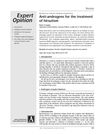Hirsutism And Hypertrichosis In Adults: Investigations And Treatment
May 2002
in “
PubMed
”
hypertrichosis hirsutism androgen-dependent areas minoxidil ciclosporine diazoxide glucocorticosteroids porphyria anorexia paraneoplastic syndromes hypertrichosis lanuginosa virilizing tumors Cushing's syndrome hyperprolactinemia acromegalia 21-hydroxylase block discoloration depilation diathermo-coagulation laser anti-androgenic cyproterone acetate progesterone-like agents anti-gonadotropic agents spironolactone flutamide finasteride GnRH-agonists metformine insulin-resistance Rogaine ciclosporin glucocorticoids Cushing's 21OHD laser hair removal anti-androgens cyproterone spironolactone Propecia GnRH agonists metformin
TLDR The document concludes that treatment for excessive hair growth depends on the cause, with options including hair removal methods and medications like anti-androgens or insulin-sensitizing drugs.
The document from 2002 discusses the differences between hypertrichosis and hirsutism in adults, their causes, and treatments. Hypertrichosis, characterized by increased hair growth in non-androgen-dependent areas, does not require hormone level monitoring, unlike hirsutism, which involves increased hair growth in androgen-dependent areas. Hypertrichosis in adults can be caused by medications (minoxidil, ciclosporine, diazoxide, or glucocorticosteroids), metabolic issues (porphyria), nutritional problems (anorexia), or paraneoplastic syndromes (hypertrichosis lanuoginosa). Hirsutism can be caused by virilizing tumors, Cushing's syndrome, hyperprolactinemia, acromegalia, or late manifestation homozygous forms of a 21-hydroxylase (21OHD) block. Treatments for hirsutism can be local (discoloration, depilation, diathermo-coagulation, laser) or systemic, with the most effective treatments being anti-androgenic: cyproterone acetate, progesterone-like and anti-gonadotropic agents, spironolactone, and flutamide. Finasteride appears less effective. Other treatments include GnRH-agonists, dietetics, and metformine in cases of insulin-resistance.
